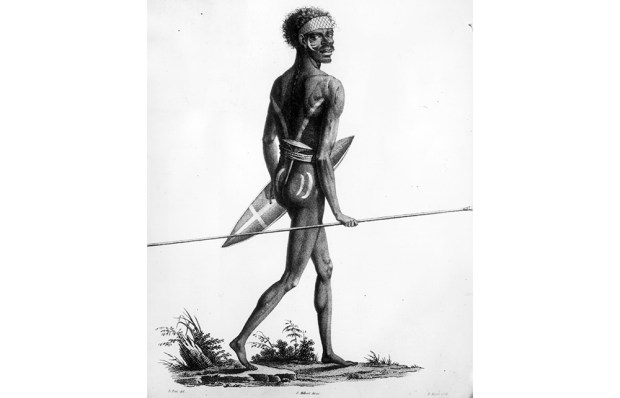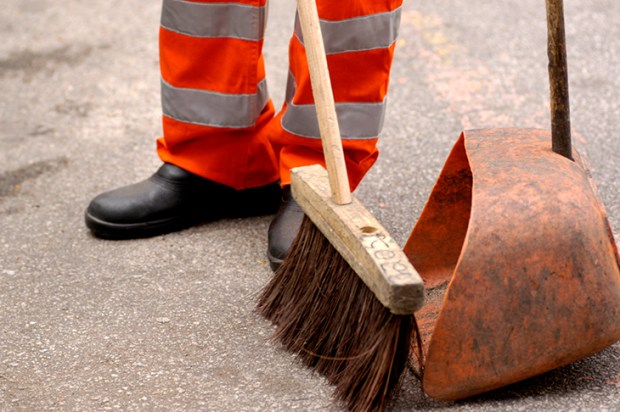It is a point of principle for the residents of the smarter parts of Manhattan not to notice – and certainly never to acknowledge – the celebrities who live amongst them. Or who die amongst them.
I stopped gawping at my Netflix neighbours within weeks of moving into the uber-chic West Village. But it was a year before I learnt, from a tiny, rusting wall plaque fifty metres down the street, that my local drag karaoke venue was also the last address of Thomas Paine.
The ’hood was less salubrious in his day, of course, and it is to the enduring shame of Americans in general and New Yorkers in particular that their most influential founding father died a pauper, and that the only state-funded memorial to him is an undistinguished bust in an obscure park an hour outside the city.
Notwithstanding the megastar appendage of Barry Humphries’ most popular persona, it’s probably a stretch to bracket the man who gave the world Dame Edna, Sir Les and Sandy Stone with the author of Common Sense, The Rights of Man and The Age of Reason.
But with the possible exceptions of Kylie (OBE, Aria Hall of Fame) Minogue and Chris (Norse God, Super Spunk) Hemsworth, it’s hard to think of a Melbournian who’s come closer to achieving global influencer status in the last half-century.
So you’d think the city’s council would have been keen to give its most famous son some official recognition while he still drew breath. But the closest it came was in 2007, when, to distinguish it from Brown St, Heidelberg, Brown Rd, Pakenham, and Brown St, Werribee (don’t go there), the name of a dead-end service corridor in the Melbourne CBD was changed from Brown Alley to Dame Edna Place. Less an homage to Australia’s best loved comedian, some might say, than a slap in his face.
Though Humphries refrained from comment at the time he made no secret of his relief when a Dame Edna mannequin was removed from Melbourne’s Docklands a few years later. Humphries had described as hideous this ‘homage’ – which, by some sinister alchemy evoked Edna’s terminally miserable bridesmaid Madge Allsop as much as her irrepressibly cheerful employer. The decision to remove it was not made in deference to his disapproval, however, but to make way for an apartment block which proved even more of an eyesore.
Thanks in large part to the decision of the Melbourne Comedy Festival board to discontinue its Barry award, and the failure of anyone in the Andrews government to object, whatever soft spot Humphries might have retained for the city of his birth hardened in the last years of his life. And by the time it ended he had transferred his affections to Adelaide, of whose Arts Festival he had always been a strong supporter, and for which patronage its organisers had always been unfailingly appreciative.
It is fitting, then, that the first official Australian statue of Barry Humphries should have been commissioned by Adelaide Council, and that it will stand outside the Adelaide theatre in which an unknown and untitled Moonee Ponds housewife made one of her earliest stage appearances.
Jane Lomax-Smith, the Lord Mayor who drove the project, should also be commended for the council’s choice of artist. Unlike the oeuvres of so many who have pipped him to an Archibald on the 26 occasions when he’s been a finalist, Robert Hannaford’s portraiture is not an exercise in PC box-ticking unencumbered by tedious constraints like draughtsmanship and composition. It is art whose meaning and quality can be understood and appreciated without recourse to pretentious, self-serving catalogue notes. And I know the statue he is working on will do its subject justice because my South Australian friend Bill Muirhead has shown me a photograph of the maquette. Even in rough miniature Hannaford has brilliantly captured not just Humphries’ physical appearance, but also his inimitable style and urbanity.
My only concern is with how the full-sized version will be mounted. While the brickbats of humourless trans-activists could never do lasting damage to Humphries’ huge legacy, it is inevitable that some other minority will one day be offended by something else he said or wrote. In anticipation of this, I suggest that rather than being welded immovably to its base, this statue should be hinged at ground level, so that the next time its subject falls out of favour, outraged undergraduates will be able to push it slowly over without fear of injury. In the course of a few hours a counterweight in the plinth would then bring the statue gently back to the vertical, giving other student mobs the opportunity to express their fury in like manner. And all at no cost to the taxpayer.
I think Barry Humphries would approve of that. Hell, I’m pretty sure Thomas Paine would, too.
Got something to add? Join the discussion and comment below.
You might disagree with half of it, but you’ll enjoy reading all of it. Try your first month for free, then just $2 a week for the remainder of your first year.














